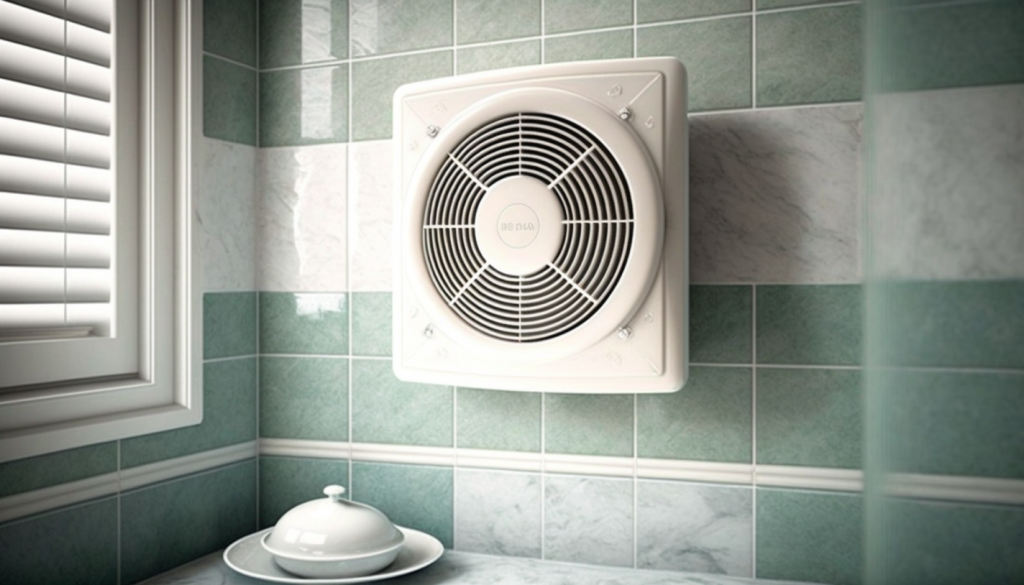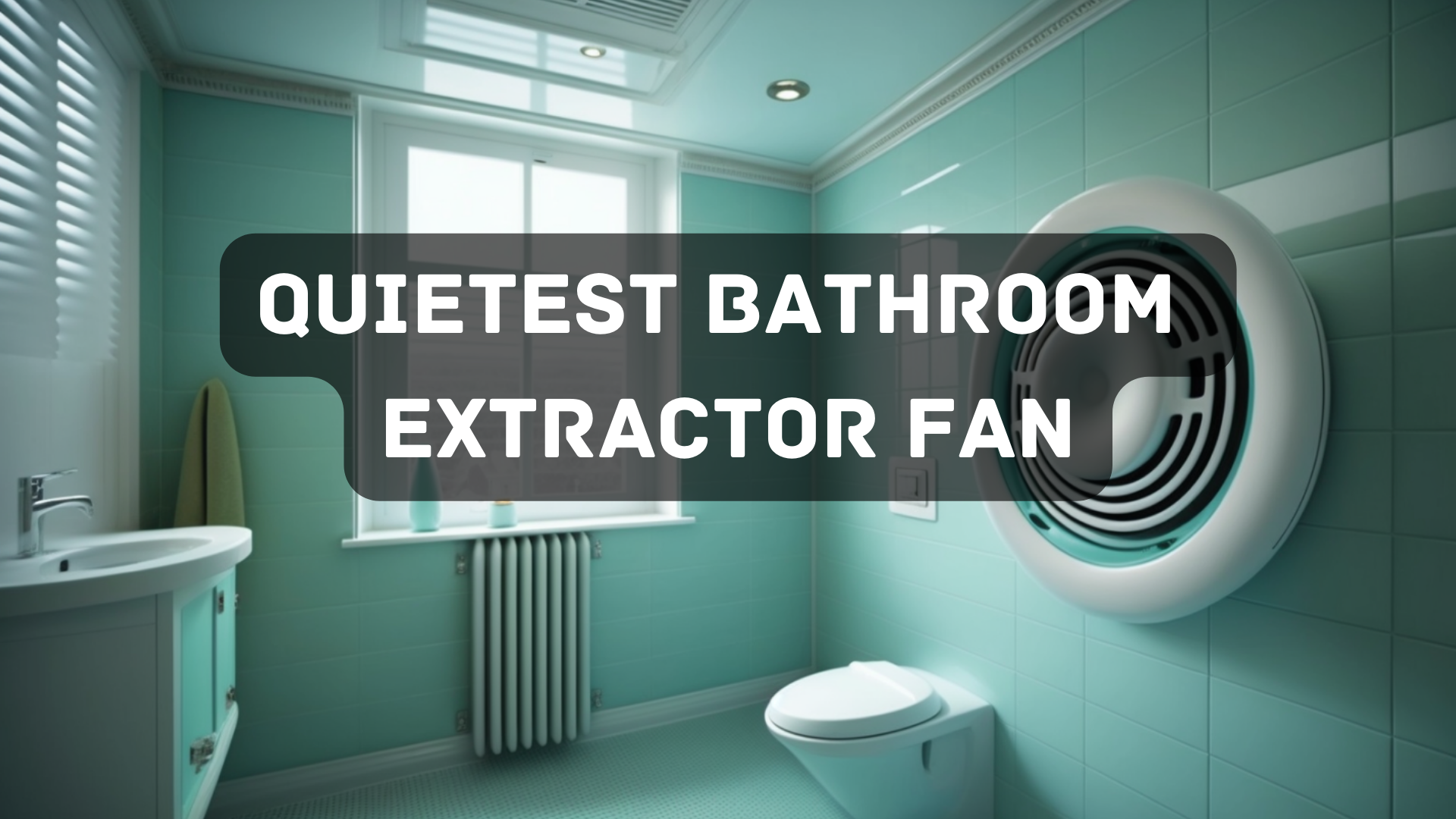Ah, the bathroom – a sanctuary for relaxation and relief. But, let’s be real, no one wants to linger in a bathroom that smells like last night’s dinner or makes them feel like they’re in a wind tunnel. That’s where bathroom extractor fans come in handy. In this blog post, we’ll be discussing everything you need to know about the quietest bathroom extractor fans.
If you’re in the market for a new bathroom extractor fan, one of your top priorities might be finding one that’s quiet. After all, nobody wants to listen to a loud, whirring fan while trying to relax in the bath or get ready for the day.
Can Bathroom Extractor Fans Be Silent?
While it is difficult to have a completely silent bathroom extractor fan, there are options that come close to being silent. Bathroom extractor fans are designed to remove humidity and odors from the bathroom, which is crucial for maintaining good air quality and preventing mold growth. But the loud noise produced by some bathroom extractor fans can be a real nuisance, especially if you have a small bathroom or share a wall with a neighbor.
Here are some points to consider when it comes to the question of whether bathroom extractor fans can be silent:
- Noise levels: Bathroom extractor fans have noise levels that are measured in sones, with lower numbers indicating quieter fans. Look for fans with a sone rating of 1 or less for the quietest operation.
- Type of fan: Axial fans are generally quieter than centrifugal fans, but they are also less powerful. Consider the size of your bathroom and the level of ventilation you need when choosing a fan.
- Ducting: The sound of the fan can also be affected by the type of ducting used. Smooth, straight ducts are quieter than flexible, corrugated ducts. Use the shortest, straightest duct run possible to reduce noise.
- Location: The location of the fan can also impact noise levels. Fans mounted in the ceiling are typically quieter than those mounted on the wall.
- Sound insulation: Some bathroom extractor fans come with sound insulation built in to help reduce noise. Look for fans with noise-reducing features if noise is a major concern.
While it may be difficult to find a completely silent bathroom extractor fan, there are options available that come close to being silent. By considering the noise levels, type of fan, ducting, location, and sound insulation, you can find a fan that is quiet enough to not disturb your peace and quiet.
How to Choose a Quiet Bathroom Fan?
Choosing the right fan for your bathroom can be a bit overwhelming, but fear not! Here are some tips to help you make the right decision:
- Look for fans with a low sone rating. The lower the rating, the quieter the fan.
- Choose fans with larger blades, as they tend to move air more quietly than smaller ones.
- Consider fans with variable speed controls, so you can adjust the fan’s speed to suit your needs.
Are There Silent Exhaust Fans?
Yes, there are! Some manufacturers have created fans with specialized sound-absorbing materials to minimize noise levels. These fans may be a bit pricier, but the investment may be worth it for those who value peace and quiet in the bathroom.
Can You Have Too Powerful Bathroom Exhaust Fan?
Yes, you can have a fan that is too powerful for your bathroom. A fan that is too powerful can cause negative air pressure, which can lead to backdrafts and other ventilation problems.

What is the Difference Between a Bathroom Exhaust Fan and a Ventilation Fan?
Bathroom exhaust fans and ventilation fans are both designed to improve indoor air quality and remove moisture, but there are some key differences between the two. Here are some points to consider when comparing the two types of fans:
- Purpose: A bathroom exhaust fan is specifically designed to remove moisture and odors from a bathroom, while a ventilation fan is intended to improve the air quality in any room of the house.
- Location: A bathroom exhaust fan is typically installed in the ceiling or wall of the bathroom, while a ventilation fan may be mounted in the ceiling or wall of any room in the house.
- Size: Bathroom exhaust fans are typically smaller than ventilation fans and have less powerful motors.
- Airflow: Bathroom exhaust fans are designed to move a large volume of air at a relatively low velocity, while ventilation fans are designed to move air at a higher velocity.
- Noise level: Bathroom exhaust fans are generally quieter than ventilation fans, as they are designed to operate at a lower speed.
- Energy efficiency: Bathroom exhaust fans are typically more energy-efficient than ventilation fans, as they are designed to run for shorter periods of time and are often equipped with energy-saving features like automatic shut-off.
It’s important to choose the right type of fan for your needs, as using the wrong type of fan can lead to ineffective ventilation and higher energy costs. If you’re unsure which type of fan is right for your space, consult with a professional to help you choose the right one.
Why is Bathroom Exhaust Fan So Loud?
Bathroom exhaust fans can be loud due to a variety of factors, including the fan’s motor, the fan blade design, and the materials used in construction. But fear not, with the right research, you can find a fan that’s both quiet and effective.
Which Company Exhaust Fan is Best for Bathroom?
There are plenty of companies that make high-quality bathroom exhaust fans, but some of the most popular brands include:
- Panasonic
- Broan
- Delta Breez
- NuTone
If you’re looking for the most silent exhaust fan for your bathroom, here are a few options to consider:
- Panasonic WhisperCeiling: This fan is consistently ranked as one of the quietest options on the market, with a decibel rating of just 0.3 sones. It also has a high airflow rate of 290 cubic feet per minute (CFM).
- Delta BreezGreenBuilder: This fan has a decibel rating of 0.8 sones and an airflow rate of 80 CFM. It’s Energy Star certified and comes with a three-year warranty.
- Broan-NuTone Ultra Green: With a decibel rating of 0.3 sones and an airflow rate of 110 CFM, this fan is another top contender for the quietest bathroom extractor fan.
Is There a Bathroom Fan That Doesn’t Vent Outside?
Yes, there are fans that recirculate the air rather than venting it outside. These fans are best for bathrooms that don’t have access to exterior walls or roofs.
How Powerful Should a Bathroom Fan Be?
The size of your bathroom will determine the fan’s necessary power level. A general rule of thumb is that the fan should be able to move one cubic foot of air per minute (CFM) per square foot of bathroom space. For example, a bathroom that is 100 square feet would require a fan with a 100 CFM rating.
The right bathroom extractor fan can make a world of difference
Choosing the right bathroom extractor fan can make a world of difference in your bathroom experience. With so many options available, finding the perfect fan may take a bit of research, but the results will be worth it. So, whether you’re looking for the quietest bathroom extractor fan or the best extractor fan for your kitchen island or cooker, make sure to consider all your options before making a final decision.
Let’s face it, nobody likes the sound of a loud and clunky bathroom extractor fan. It’s enough to wake the dead and ruin any chance of a peaceful bathroom experience. But fear not, my friends, for there is a solution – the ultra quiet bathroom fan with light!
Alternatively, if you dislike the sound of a loud and bulky bathroom extractor fan and want a light to go with it, consider learning more about the ultra-quiet bathroom fan with light!

